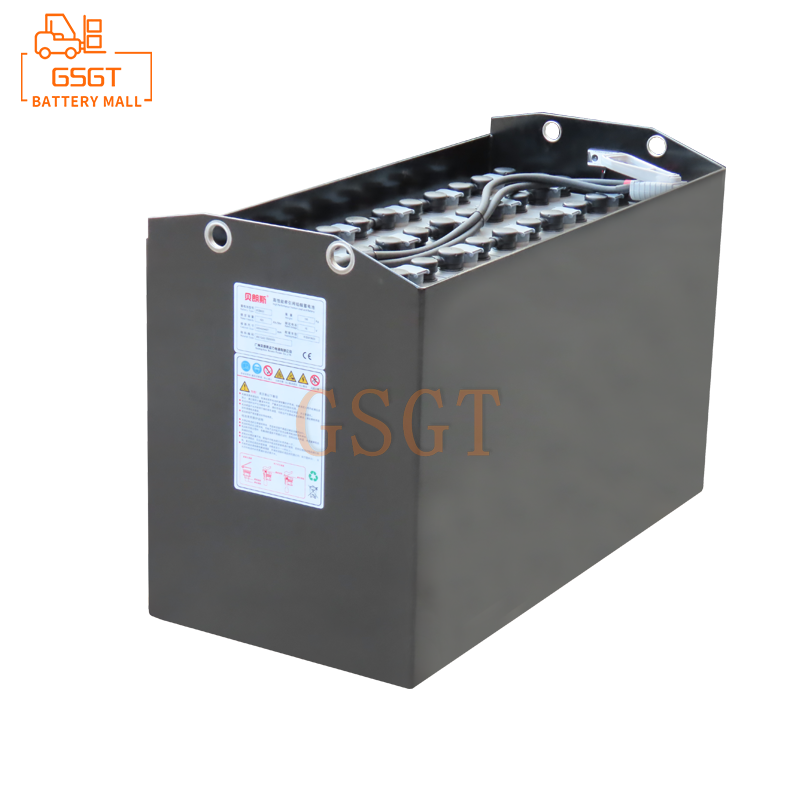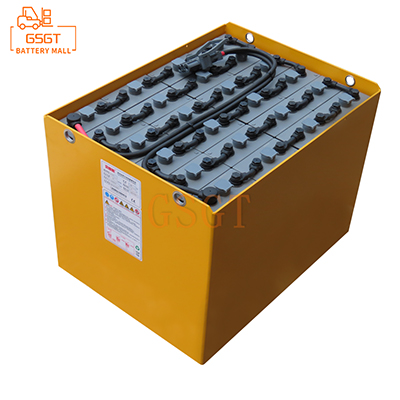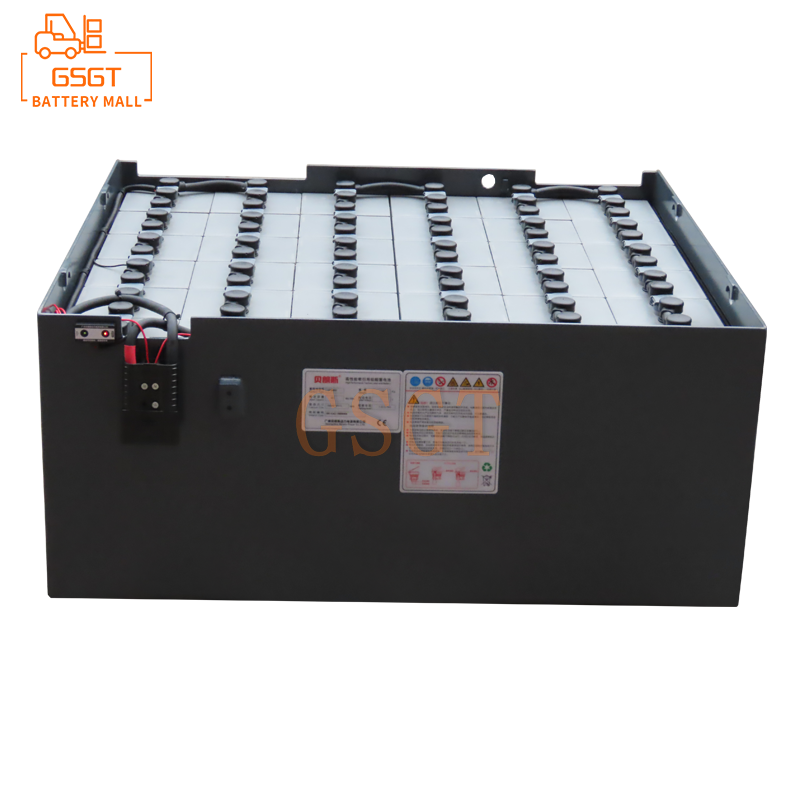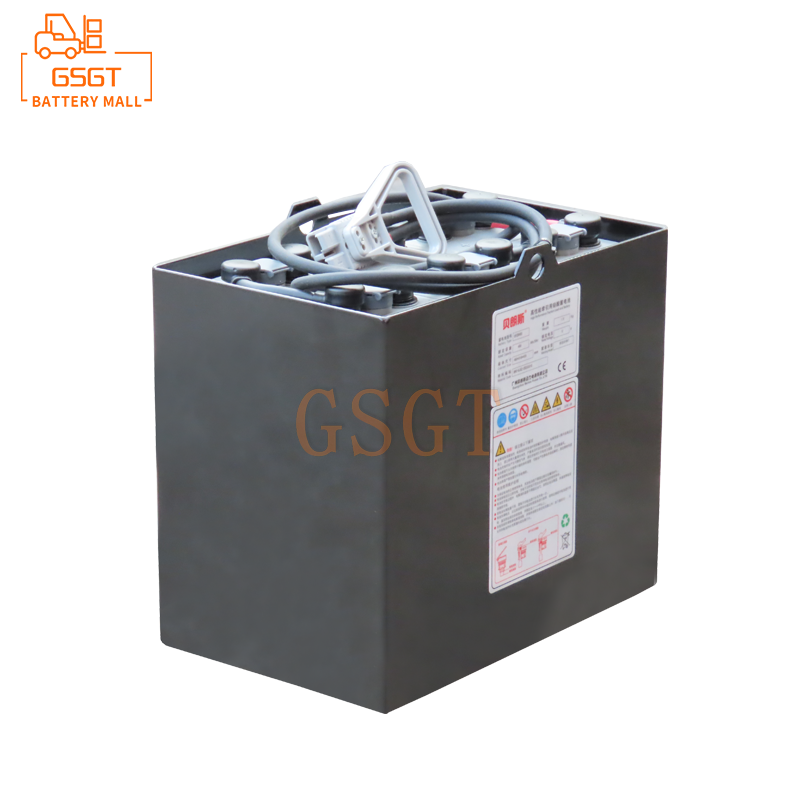Time:2025-05-07 13:50:49
Browse:624
Abstract
This article delves deeply into the mystery of the electrolyte in forklift lead-acid batteries, analyzing its composition, properties, and key roles in the battery charging and discharging processes. At the same time, the key points for maintaining the electrolyte of forklift lead-acid batteries are elaborated in detail, aiming to help forklift users, maintenance personnel, etc. better understand and maintain lead-acid batteries, extend their service life, improve the operational efficiency of forklifts, and reduce operating costs.
1. Introduction
Forklifts, as indispensable handling equipment in modern logistics, warehousing and other industries, mainly rely on lead-acid batteries for power. Lead-acid batteries have occupied an important position in the forklift field due to their advantages such as mature technology, low cost and good performance at high and low temperatures. The electrolyte, as the core component of lead-acid batteries, has a crucial impact on the performance and lifespan of the batteries. A thorough understanding of the mystery of the electrolyte in forklift lead-acid batteries and the mastery of its maintenance key points are of great significance for ensuring the normal and efficient operation of forklifts.
2. Composition and Properties of Electrolyte in Forklift Lead-Acid Batteries
(1) Composition of the electrolyte
The electrolyte of forklift lead-acid batteries is mainly composed of sulfuric acid and distilled water mixed in a certain proportion. Sulfuric acid plays a crucial chemical role in the electrolyte. It participates in the electrochemical reactions of the battery and serves as an important medium for the mutual conversion between electrical energy and chemical energy. Distilled water is used to dilute sulfuric acid, adjust the concentration of the electrolyte, and enable the battery to operate in a suitable chemical environment.
(2) Properties of the electrolyte
1. ** Density ** : The density of the electrolyte is one of its important characteristics, usually ranging from 1.28 to 1.30g/cm³. For lead-acid batteries of different specifications and usage requirements, the density of the electrolyte may vary slightly. The density is closely related to the concentration of sulfuric acid. The higher the concentration of sulfuric acid, the greater the density of the electrolyte. During the use of a battery, the charging and discharging state of the battery can be roughly determined by measuring the density of the electrolyte.
2. ** Corrosiveness ** : Sulfuric acid is highly corrosive, which makes the electrolyte have a strong corrosive effect on metals, skin, etc. When operating and maintaining lead-acid batteries, strict protective measures must be taken to prevent the electrolyte from splashing out and causing injury and equipment damage.
3. ** Conductivity ** : Good conductivity is an important functional characteristic of the electrolyte. Sulfuric acid ionizes into hydrogen ions and sulfate ions in aqueous solution. These ions move directionally under the action of the electric field inside the battery, forming a current, thereby achieving the charging and discharging process of the battery.
3. The Role of Electrolyte in the Charging and Discharging Process of Lead-Acid Batteries
(1) Charging process
When charging a lead-acid battery, an external power source applies electrical energy to the battery. At this point, an electrolytic reaction occurs inside the battery. Sulfate ions in the electrolyte move towards the positive plate, react with lead on the positive plate to form lead dioxide, and simultaneously release electrons. Hydrogen ions move towards the negative plate, gain electrons on the negative plate, and combine with lead to form spongy lead. During this process, the concentration of sulfuric acid in the electrolyte gradually increases, its density grows, and the battery converts electrical energy into chemical energy for storage.
(2) Discharge Process
When forklifts use lead-acid batteries, the batteries are in a discharged state. Under the action of chemical energy, the spongy lead on the negative plate loses electrons and combines with sulfate ions in the electrolyte to form lead sulfate. Lead dioxide on the positive plate gains electrons and reacts with hydrogen ions and sulfate ions in the electrolyte, also generating lead sulfate and water. As the discharge proceeds, the sulfuric acid in the electrolyte is continuously consumed, its concentration decreases, its density reduces, and chemical energy is converted into electrical energy, providing power for the forklift.
4. Key Points for Maintaining the Electrolyte of Forklift Lead-acid Batteries
(1) Regularly check the electrolyte level
1. ** Inspection Frequency ** : It is recommended to check the electrolyte level of the forklift's lead-acid battery every week. In high-temperature environments or when batteries are frequently used, the inspection frequency should be appropriately increased, and it can be shortened to once every 2 to 3 days.
2. ** Liquid Level Standard ** : The electrolyte liquid level should be maintained within a range of 10-15mm above the battery plates. If the liquid level is too low, the plates will be exposed to the air, causing sulfation and oxidation of the plates, which will reduce the battery capacity and lifespan. If the liquid level is too high, during the battery charging and discharging process, the electrolyte is prone to overflow, corroding the battery casing and other components of the forklift.
3. ** Replenishing electrolyte ** : When the electrolyte level is found to be too low, distilled water or dedicated lead-acid battery replenishment fluid should be replenished in a timely manner. It is strictly prohibited to use tap water or other impure water, as the impurities they contain may cause damage to the battery, affecting its performance and lifespan.
(2) Monitor the density of the electrolyte
1. ** Measuring Tools ** : Using a hydrometer to measure the density of the electrolyte is a common method. Hydrometers are divided into floor-type hydrometers and digital hydrometers. Floor-type hydrometers are easy to operate and have a lower cost, but their accuracy is relatively low. Digital densitometers are accurate in measurement and convenient to operate, but they are relatively expensive.
2. ** Measurement Frequency ** : Generally, the electrolyte density is measured once a month. During the first three months after the battery is first used, the measurement frequency can be appropriately increased to observe the initial performance of the battery and the changes in the density of the electrolyte.
3. ** Density and Battery State Judgment ** : By comparing the measured density of the electrolyte with the standard density value, the charging and discharging state of the battery can be determined. If the density value is significantly lower than the standard value, it indicates that the battery has discharged a lot and needs to be charged in time. If the density value still fails to reach the normal range after charging, it may indicate that the battery is faulty and requires further inspection and repair.
(3) Keep the electrolyte clean
1. ** Prevent impurities from entering ** : During daily use and maintenance, ensure that the battery cover is well sealed to prevent dust, debris, etc. from entering the battery and contaminating the electrolyte. Regularly clean the dust and dirt on the battery surface to prevent them from entering the battery through the ventilation holes of the battery cover.
2. ** Avoid electrolyte contamination ** : When adding electrolyte or performing other maintenance operations, use clean tools to prevent impurities on the tools from mixing into the electrolyte. If the electrolyte is found to be contaminated, it should be replaced in time, and the battery should be cleaned and maintained.
(4) Control the working temperature
1. ** The Influence of Temperature on Electrolyte ** : Temperature has a significant impact on the performance of the electrolyte in lead-acid batteries and the battery life. High temperatures will accelerate the evaporation of the electrolyte and the chemical reactions inside the battery, resulting in changes in the concentration of the electrolyte and accelerated aging of the plates. Low temperatures will reduce the conductivity of the electrolyte, decrease the battery capacity and lower the charging and discharging efficiency.
2. ** Temperature Control Measures ** : In the high-temperature environment of summer, forklifts should be avoided from being exposed to the sun for a long time. Try to park forklifts in a cool and well-ventilated place. In the low-temperature environment of winter, insulation measures can be taken, such as installing insulation covers on the battery and using heating devices to preheat the battery, to ensure that the electrolyte operates within an appropriate temperature range.
(5) Properly handle electrolyte leakage
1. ** Emergency Response ** : In the event of electrolyte leakage, immediate protective measures should be taken, including wearing protective gloves, goggles and protective clothing. Use dedicated adsorption materials to adsorb the leaked electrolyte to prevent its diffusion and environmental pollution.
2. ** Subsequent Treatment ** : The adsorbed materials should be treated as hazardous waste and must not be discarded at will. For the ground, equipment and other parts contaminated by the electrolyte, the residual sulfuric acid can be neutralized with a sodium bicarbonate solution, and then rinsed thoroughly with clean water.
5. Conclusion
The electrolyte of forklift lead-acid batteries, as a key substance for the battery to convert electrical energy into chemical energy, has unique mysteries in terms of its composition, properties, and role during the charging and discharging process. Mastering the key points of maintaining the electrolyte of forklift lead-acid batteries, including regularly checking the liquid level and density, keeping it clean, controlling the working temperature and properly handling leakage, is crucial for ensuring the performance and lifespan of lead-acid batteries and the normal and efficient operation of forklifts. With the continuous development of industries such as logistics and warehousing, the demand for forklifts is increasing day by day. A thorough understanding and emphasis on the maintenance of lead-acid battery electrolyte will help reduce operating costs and enhance the economic benefits and competitiveness of enterprises. In the future, with the continuous advancement of technology, lead-acid batteries and their electrolytes will also be constantly improved and perfected, providing more reliable and efficient power support for equipment such as forklifts.

$2450

$3405

$4045

$400

MESSAGE
Professional And Efficient
Security
Affordable Price
Professional Services